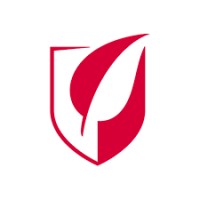Company Cyber Security Posture
NANA
NA Company Details
NA
NA
NA
NA
NA
NA
Scan still pending
NA
NA
Between 200 and 800
This score is AI-generated and less favored by cyber insurers, who prefer the TPRM score.
 NA Global Score
NA Global Score.png)

Company Scoring based on AI Models
| Model Name | Date | Description | Current Score Difference | Score |
|---|---|---|---|---|
| AVERAGE-Industry | 03-12-2025 | This score represents the average cybersecurity rating of companies already scanned within the same industry. It provides a benchmark to compare an individual company's security posture against its industry peers. | N/A | Between 200 and 800 |
Company Cyber Security News & History
| Entity | Type | Severity | Impact | Seen | Url ID | Details | View |
|---|
Company Subsidiaries

NA
Access Data Using Our API

Get company history
.png)
NA Cyber Security News
Comprehensive Analysis of the Cybersecurity Certification Market, 2024-2030: A Forecasted $8.03 Billion Industry
Features exhaustive information on new products & services, untapped geographies, recent developments, and investments, and an in-depth ...
EY advises Medfiles on selling its Laboratory Division to Eurofins. | EY - Finland
Medfiles Ltd, a renowned contract research organization in Finland, announced the successful completion of the sale of its R&D and Analytical service business ...
MSSP Acquired: Eurofins Buys Cybersecurity Service Provider Commissum -
Eurofins Digital Testing provides end-to-end Quality Assurance (QA), automated test tools, test services, cybersecurity and managed services to ...
Eurofins Digital Testing has acquired cybersecurity company Commissum Associates
Eurofins Digital Testing, the end-to-end quality assurance and testing services provider, has acquired cybersecurity Commissum Associates. Terms ...
Eurofins divests its Digital Testing business
Eurofins' Digital Testing was established in 2015 and has increased substantially in size and profitability over the past few years through ...
Eurofins E&E and ETS-Lindgren Complete Half-Million-Dollar Expansion to Silicon Valley EMC Testing Facility
Eurofins MET Labs is proud to announce the completion of a half-million-dollar expansion of its 10-meter EMC Chamber at their Santa Clara ...
Ransomware attacks are on the rise and the criminals are winning
Ransomware attacks, which see individuals and organisations locked out of their data unless they pay up, are on the rise. The apparent latest ...
Red teaming
Red teaming. Professional Security magazine online - an essential read for everyone in the security industry.
Cyber security company expands digital forensics services with acquisition
Birmingham-based cyber security firm Commissum has expanded its services by acquiring the digital forensics portion of Eurofins Forensics ...

NA Similar Companies

CSL
CSL is a leading global biotechnology company with a dynamic portfolio of lifesaving medicines, including those that treat haemophilia and immune deficiencies, vaccines to prevent influenza, and therapies in iron deficiency, dialysis and nephrology. Since our start in 1916, we have been driven by ou

Roche
Roche is a global pioneer in pharmaceuticals and diagnostics focused on advancing science to improve people’s lives. The combined strengths of pharmaceuticals and diagnostics under one roof have made Roche the leader in personalised healthcare – a strategy that aims to fit the right treatment to eac
ICON plc
Since our foundation in Dublin, Ireland in 1990, our mission has been to help our clients to accelerate the development of drugs and devices that save lives and improve quality of life. We do this by delivering best in class information, solutions and performance, with an unyielding focus on quality

Agilent Technologies
Agilent customers are finding new ways to treat cancer, ensure food, water, air, and medicine quality and safety, discover new drug treatments, research infectious diseases, and create alternative energy solutions for a greener planet. From start to finish, we have them covered with our vast product

Gilead Sciences
At Gilead, we set – and achieve – bold ambitions to create a healthier world for all people. From our pioneering virology medicines to our growing impact in oncology, we're delivering innovations once thought impossible in medicine. Our focus goes beyond medicines, and we also strive to remedy healt

Talecris Plasma Resources
Talecris Plasma Resources was established in 2006 to ensure a reliable and safe supply of plasma for the production of premium protein therapies that help save and enhance lives worldwide. Today, we are a nationwide network of 69 plasma collection centers guided by our unwavering commitment to safet

Frequently Asked Questions
Explore insights on cybersecurity incidents, risk posture, and Rankiteo's assessments.
NA CyberSecurity History Information
How many cyber incidents has NA faced?
Total Incidents: According to Rankiteo, NA has faced 0 incidents in the past.
What types of cybersecurity incidents have occurred at NA?
Incident Types: The types of cybersecurity incidents that have occurred include .
Additional Questions
What Do We Measure?
















Every week, Rankiteo analyzes billions of signals to give organizations a sharper, faster view of emerging risks. With deeper, more actionable intelligence at their fingertips, security teams can outpace threat actors, respond instantly to Zero-Day attacks, and dramatically shrink their risk exposure window.
These are some of the factors we use to calculate the overall score:
Identify exposed access points, detect misconfigured SSL certificates, and uncover vulnerabilities across the network infrastructure.
Gain visibility into the software components used within an organization to detect vulnerabilities, manage risk, and ensure supply chain security.
Monitor and manage all IT assets and their configurations to ensure accurate, real-time visibility across the company's technology environment.
Leverage real-time insights on active threats, malware campaigns, and emerging vulnerabilities to proactively defend against evolving cyberattacks.




